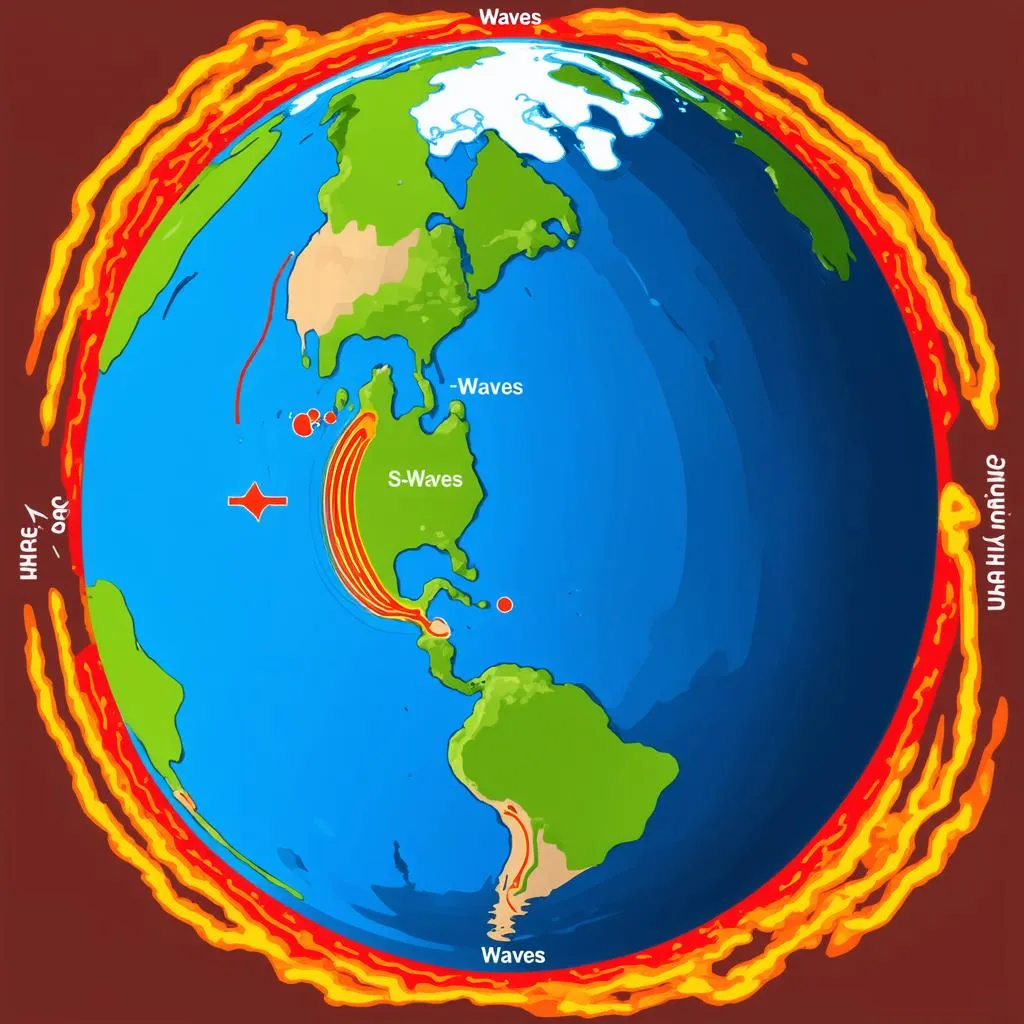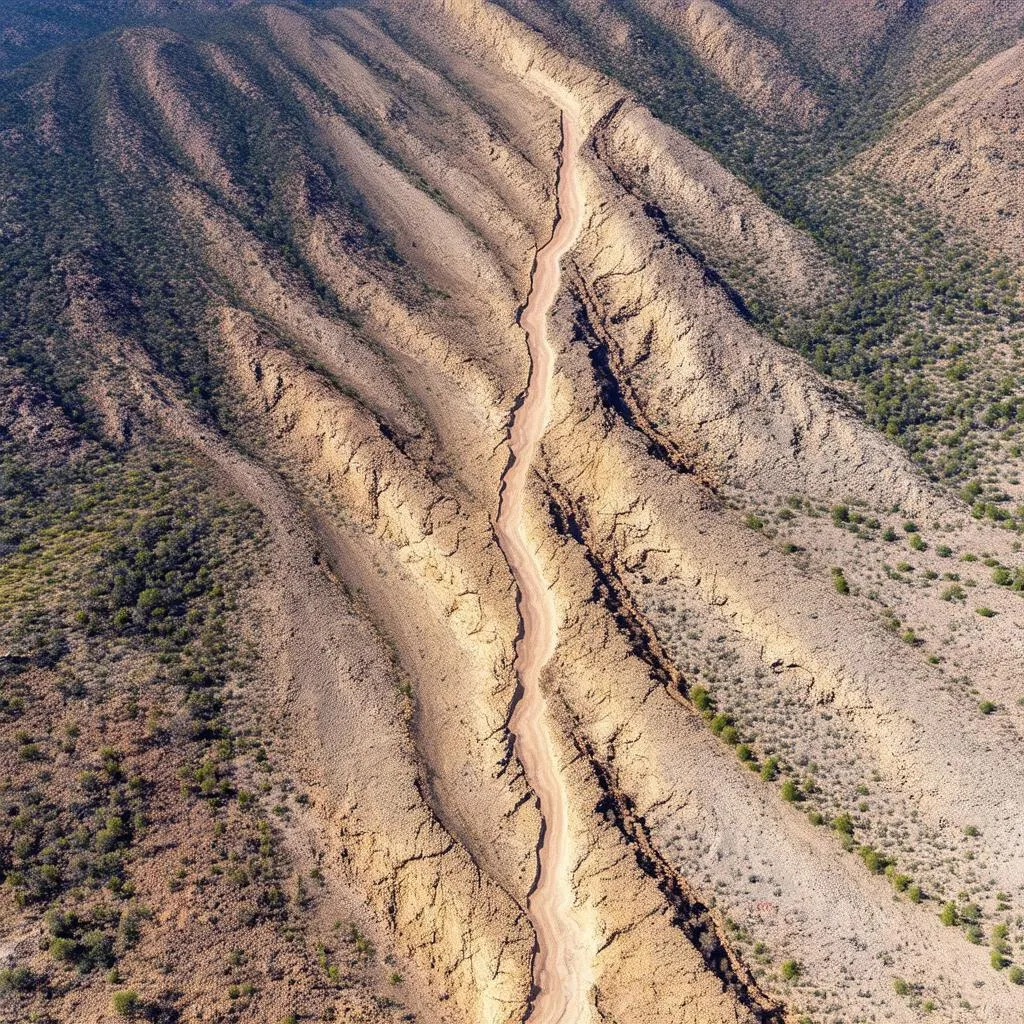Have you ever felt the ground shake beneath your feet? Maybe you were strolling through a bustling city like Tokyo, known for its seismic activity, or perhaps you were exploring the ancient ruins of Rome, built on a land shaped by earthquakes. Whatever your experience, earthquakes can be both fascinating and terrifying natural phenomena. One question that often arises is: how fast does an earthquake actually travel?
The Velocity of Destruction: Exploring Seismic Wave Speed
Contrary to what some might believe, an earthquake itself doesn’t travel. It’s the energy released by the sudden movement of tectonic plates that travels, in the form of seismic waves. These waves ripple outwards from the earthquake’s focus, much like ripples on a pond after you throw a stone.
But here’s the catch: there are different types of seismic waves, each with its own speed:
P-waves (Primary waves): The fastest of the bunch, P-waves are compressional waves, similar to sound waves. They travel through the Earth’s interior at speeds ranging from 3 to 8 kilometers per second (km/s) depending on the material they’re passing through. Imagine the jolt you feel when a train suddenly brakes – that’s the P-wave arriving first.
S-waves (Secondary waves): Arriving later, S-waves are shear waves, moving side-to-side. They’re slower than P-waves, clocking in at speeds around 1.5 to 4 km/s. Think of the swaying motion you experience during an earthquake – that’s the S-wave making its presence known.
Surface waves: As their name suggests, these waves travel along the Earth’s surface. They are the slowest of the three, but often the most destructive, causing the ground to shake violently. Surface waves are responsible for much of the damage we associate with earthquakes.
 Earthquake Waves
Earthquake Waves
Factors Influencing Seismic Wave Velocity
The speed of these waves isn’t constant. Just like a car navigating different terrains, seismic waves are affected by the material they travel through. Denser materials like solid rock allow for faster wave propagation, while looser materials like sediments slow them down.
This is why understanding seismic wave velocity is crucial for seismologists. By analyzing the arrival times of different waves at various locations, they can pinpoint the earthquake’s epicenter and estimate its magnitude.
Can You Outrun an Earthquake?
Let’s be realistic – outrunning an earthquake is an impossible feat. However, understanding the speed of seismic waves gives us valuable seconds to take cover and protect ourselves.
“Every second counts during an earthquake,” says Dr. Emily Carter, a fictional seismologist, “Knowing that P-waves arrive first can give you a brief warning before the more destructive S-waves and surface waves hit.”
Planning Your Travels? Consider Seismic Activity
When planning your next adventure, remember that some areas are more prone to earthquakes than others. For instance, the Pacific Ring of Fire, a zone encircling the Pacific Ocean, is notorious for its frequent seismic activity.
Travelcar.edu.vn can be your guide to exploring the world safely. We offer resources and information on various destinations, including their seismic risk levels.
FAQs about Earthquake Speed
1. Do all earthquakes travel at the same speed?
No, the speed of seismic waves varies depending on the type of wave and the material they are traveling through.
2. What is the fastest earthquake ever recorded?
While the speed of seismic waves is measurable, there isn’t a single “fastest” earthquake. The energy release and subsequent wave propagation vary from one earthquake to another.
3. Can animals sense earthquakes before humans?
There’s anecdotal evidence suggesting that animals might be able to detect subtle changes in the Earth’s magnetic field or gas emissions prior to earthquakes. However, scientific research on this topic is ongoing.
 San Andreas Fault
San Andreas Fault
Travel Safe, Explore Confidently
From the majestic Himalayas to the vibrant streets of San Francisco, the world is a fascinating tapestry of geological wonders. Understanding the forces that shape our planet, like earthquakes, allows us to appreciate its beauty while staying safe.
For more information on travel safety and tips on planning your next adventure, visit travelcar.edu.vn.
Remember, the ground beneath our feet might be constantly shifting, but with knowledge and preparedness, we can navigate the world with confidence.